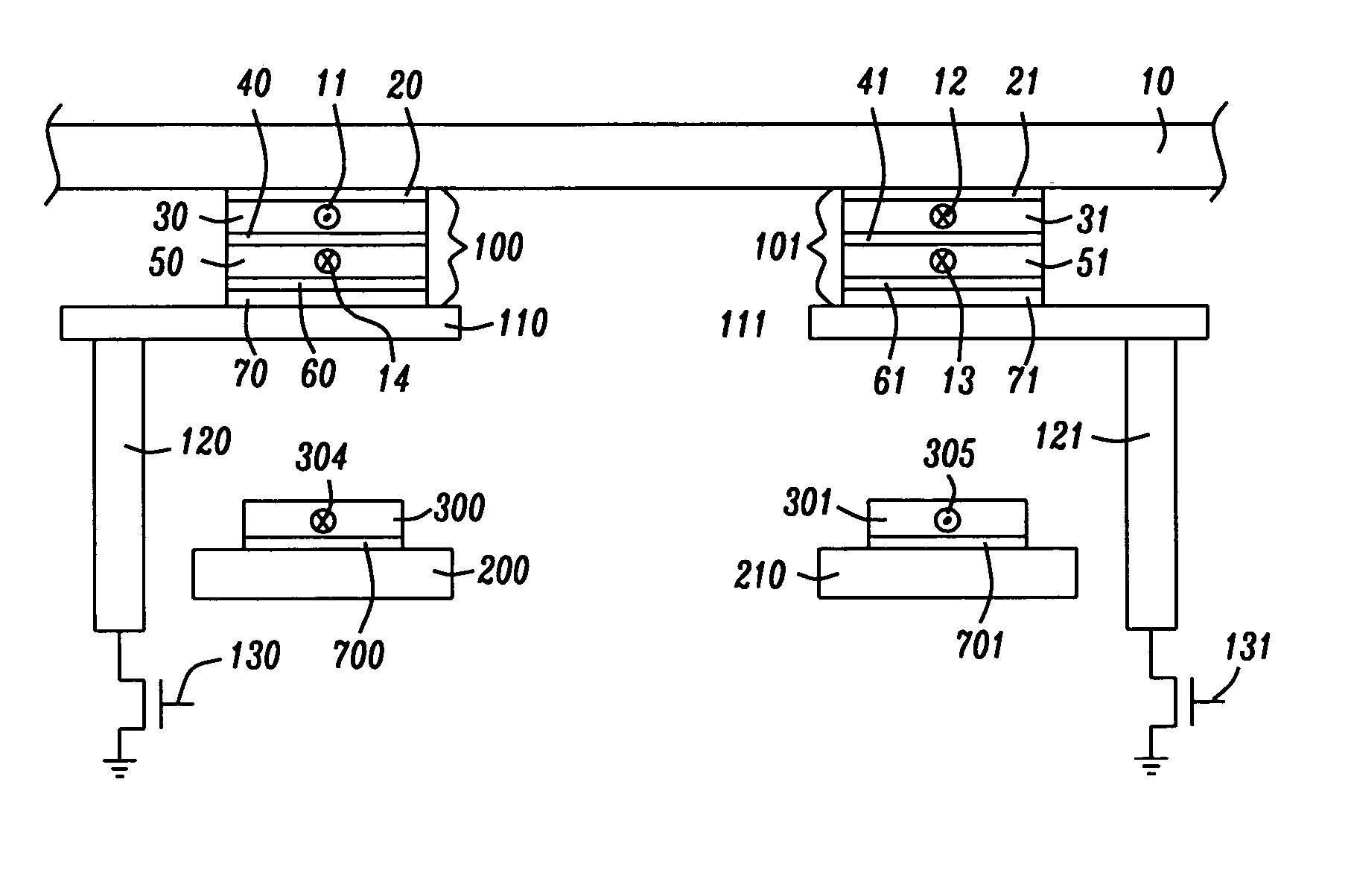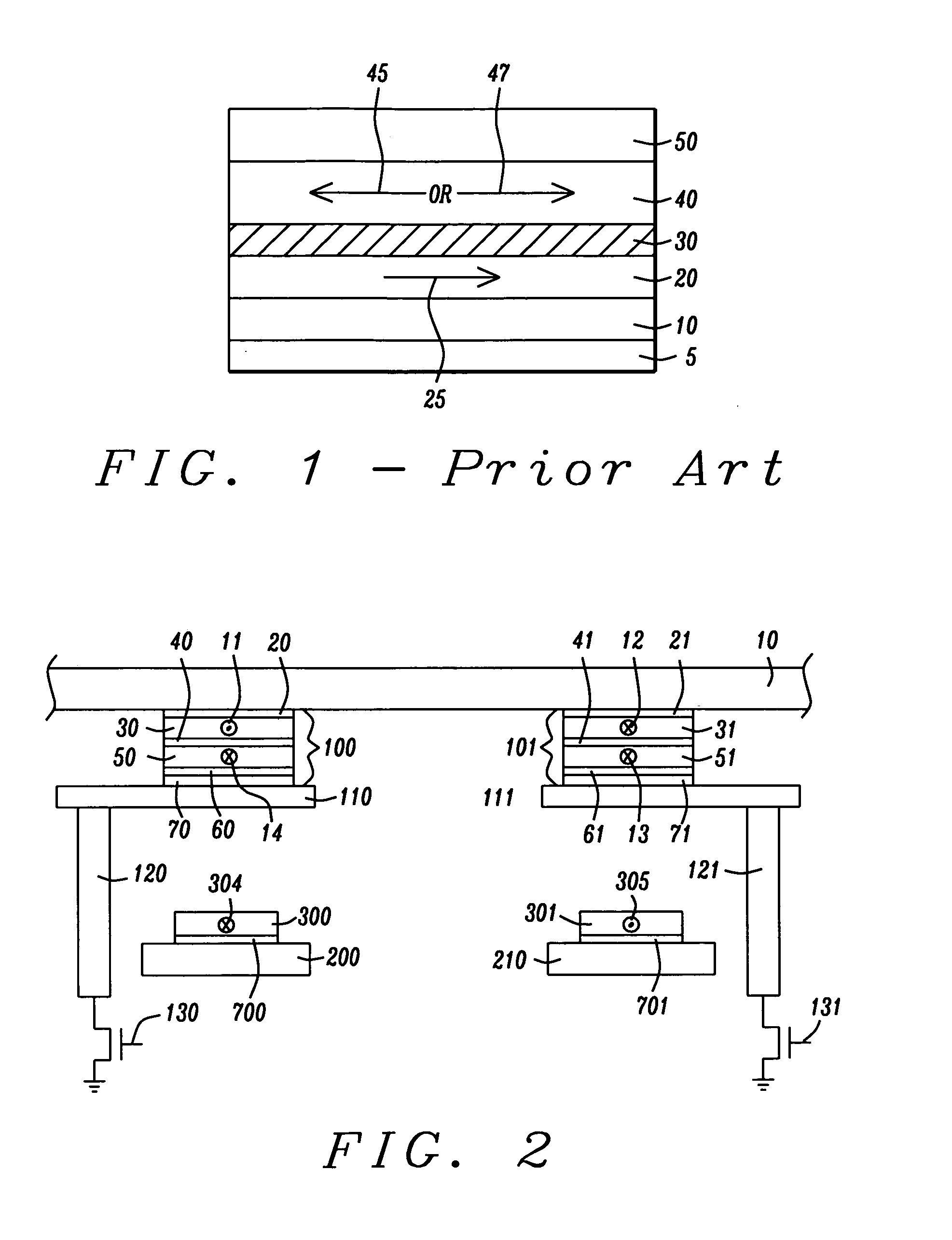MRAM with split read-write cell structures
- Summary
- Abstract
- Description
- Claims
- Application Information
AI Technical Summary
Benefits of technology
Problems solved by technology
Method used
Image
Examples
Embodiment Construction
[0031] The preferred embodiments of the present invention are MRAM cells and arrays of such cells, having a free layer that is separated into two parts, each part residing in a separate portion of the cell. The first free layer part (layer 1) has little or no magnetic anisotropy and may even be super-paramagnetic, or, if it does have some degree of magnetic anisotropy, that anisotropy will be associated with an easy axis of magnetization that is perpendicular to the easy axis of magnetization of the second free layer part. The first free layer part and its associated cell portion is used by the MRAM cell and its associated circuitry to read the stored information within the cell. The second free layer part (layer 2) has substantial magnetic anisotropy (in order to maintain a magnetization direction of stored information) and is used within the MRAM cell and associated circuitry to store the information that is subsequently read by layer 1. The second layer need only be located suffi...
PUM
 Login to View More
Login to View More Abstract
Description
Claims
Application Information
 Login to View More
Login to View More - R&D
- Intellectual Property
- Life Sciences
- Materials
- Tech Scout
- Unparalleled Data Quality
- Higher Quality Content
- 60% Fewer Hallucinations
Browse by: Latest US Patents, China's latest patents, Technical Efficacy Thesaurus, Application Domain, Technology Topic, Popular Technical Reports.
© 2025 PatSnap. All rights reserved.Legal|Privacy policy|Modern Slavery Act Transparency Statement|Sitemap|About US| Contact US: help@patsnap.com



